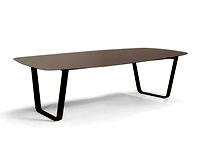In the field of light quality, in order to gain one point, it is necessary to achieve at
least four of a series of nine strategies concerning lighting design, specified by LEED.
In the operating phase, these strategies must be supported by the control and
automation system. To achieve the goals of full control exercised by occupants and
high-quality light (gaining LEED credits), Ekinex control and automation system
offers significant benefits:
• a wide range of solutions for individual command and control: multifunction bus
pushbuttons with status feedback, wall-mounted touch displays, apps to allow
control from mobile devices such as tablets and smartphones, voice control
thanks to home assistants
• environmental sensors (presence sensors, movement sensors and brightness
sensors), for manual/automatic control pairing;
• multi-channel actuators and dimmers for switching (on/off) and continuous
control of light intensity (dimming) emitted by light sources, including the choice
among different shades (warm light/cold light) and colors;
• scenes to coordinate the light with other technical building systems, such as
HVAC and shading;
• integration of DALI as a subsystem specifically dedicated to lighting functions by
a dedicated gateway.
Natural light
This credit is worth 1-3 points. As well as interior lighting, it belongs to the category
Indoor Environmental Quality (EQ). The aim is to put in communication the building
occupants with the outside, to strengthen the circadian rhythms and to reduce the
use of artificial lighting, while allowing natural light penetration and outside view.
Due to the presence of large glazed surfaces, LEED requirements for obtaining the
credit require that glare control be provided by manual or automatic devices in all
regularly occupied spaces, keeping manual adjustments a priority.
EKINEX control and automation system helps:
• integrating natural light only where and when actually needed by switching on/off
or dimming the lighting fixtures;
• selectively turning off the light in rooms where human presence is not detected;
• simulating the natural course of daylight, in terms of intensity and color
temperature, in rooms with little or no natural light;
• controlling shading devices (such as curtains, shutters and venetian blinds), in
order to avoid glare.
The presence of EKINEX sensors, which are able to detect both human presence and
brightness, allows to reduce the number of devices to be installed in a room to a
minimum. The presence detection function can be used by other technical building
systems, such as the heating, cooling and ventilation. In addition to what concerns
lighting control and shading, there is a credit for quality views. It is worth 1-2 points
and it belongs to the category Indoor Environmental Quality (EQ) and it requires a
direct line of sight to the outdoors via vision glazing for 75% of all regularly occupied
floor area.
References
LEED v4 for Building Design and Construction.
Any intellectual property and the rights referred to LEED rating system belong to
USGBC.
LEED requirements for Retail and Healthcare
The Retail requirements are to provide individual lighting controls for at least
90% of the individual occupant spaces in office and administrative areas.
In sales areas, requirements are to provide controls that can reduce the ambient
light levels to a midlevel (30% to 70% of the maximum illumination level not
including daylight contributions).
The Healthcare requirements are to provide individual lighting controls for at
least 90% of individual occupant spaces in staff areas.
For at least 90% of patient positions, requirements are to provide lighting
controls that are readily accessible from the patient’s bed.
“Sustainability ensures the satisfaction
of the needs of the present generation
without compromising the ability of
future generations to meet their own
needs”
SMART LIGHTING
SMART LIGHTING
112
113







